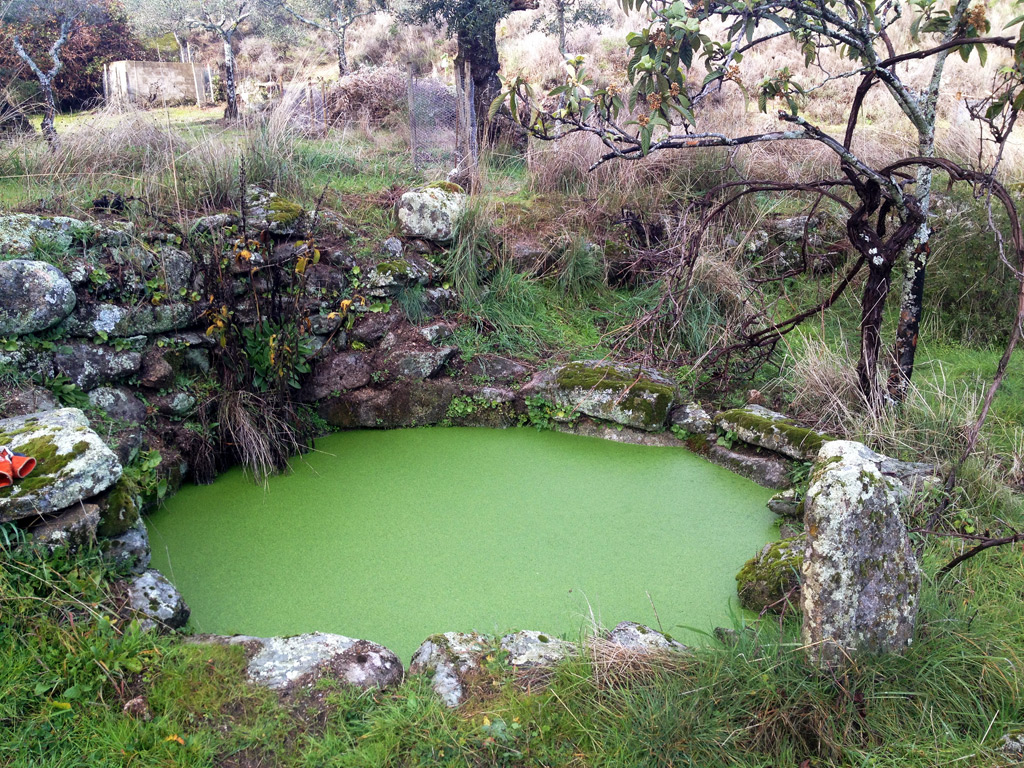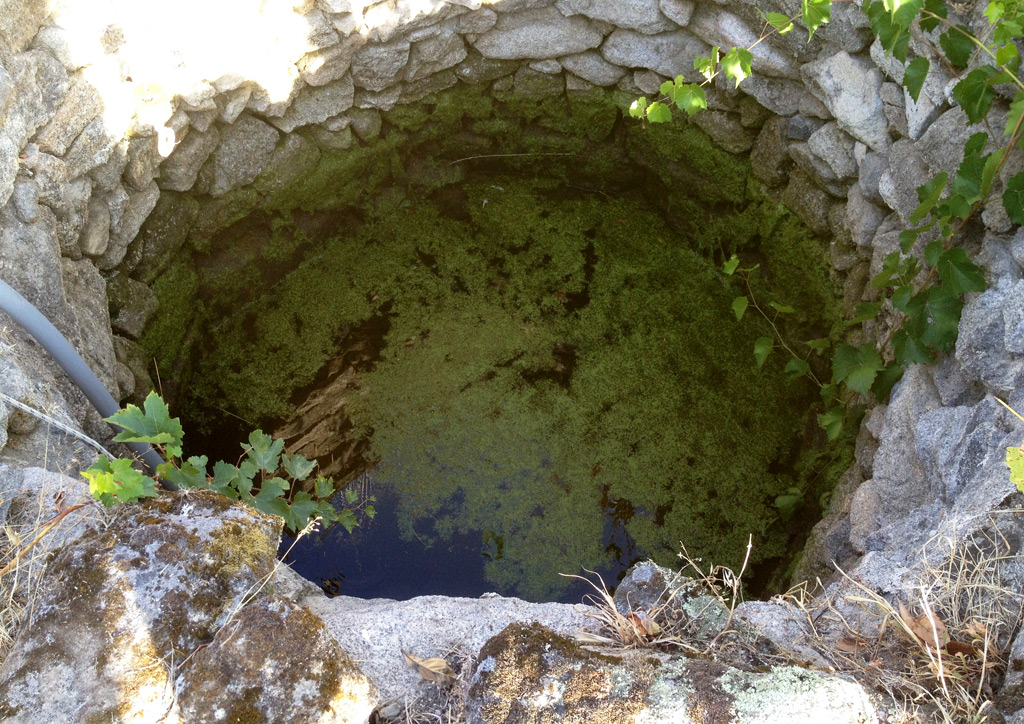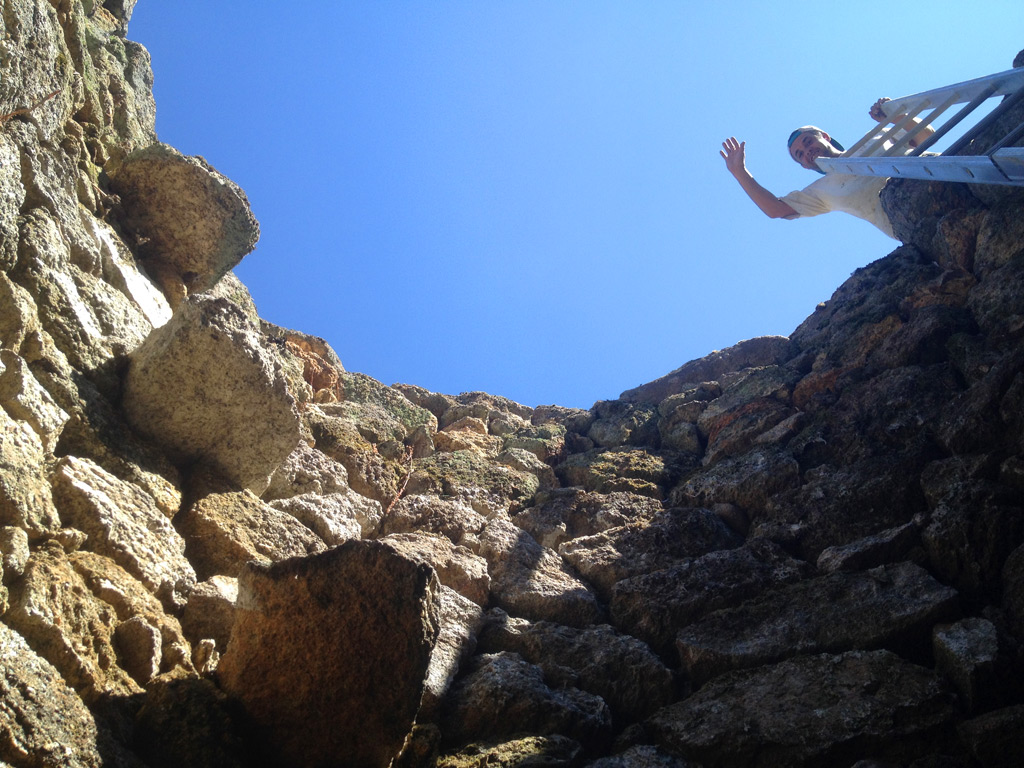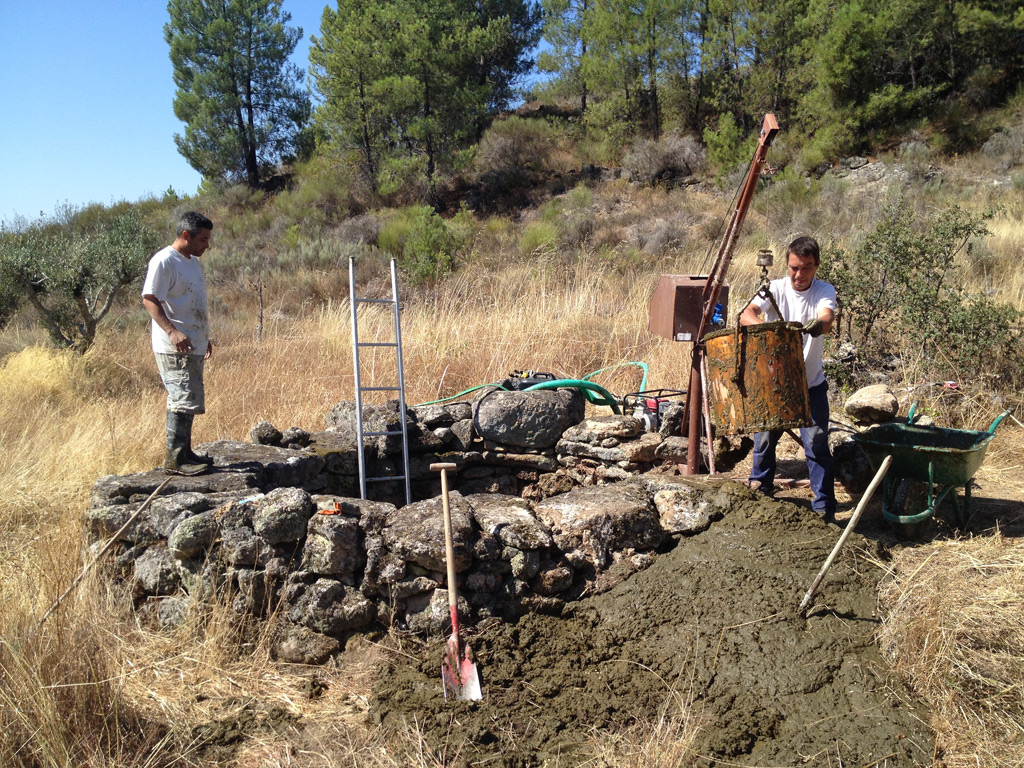There are a number of old stone-lined agricultural wells on this land. They were probably built between 80-200 years ago, it’s hard to say exactly when, and it depends on who you ask. Suffice to say, they are pretty impressive feats of construction. The amount of work that went into their construction must have been immense.
Objective
To clean 2 of the old wells on the land, determine their depth, volume and get a sense for their flow-rate, and improve their water flow. Here is one of the wells in winter, completely full..

And the same well in summer. The water level is about 3-4 meters less than in winter. In an average year we draw about 400-500 m3 from this well, which brings it down to about 1-2 meter of water.

Cleaning
Before cleaning a well, it needs to be emptied. We bought an electric submersible pump for this purpose, which can handle murky water with some junk in it. Get the most powerful pump you can afford, it will save you time and actually do the job. It’s important to consider the ‘head’ of the pump, which defines how high it can effectively lift the water. We got this one with a 12 meter head. It emptied the well pictured above, which contained about 15000 liters of water in summer, in 45 minutes.
Then the fun really begins. We cleaned two wells about 80 meters apart and the types of sediment at the bottom were completely different. The first contained sandy sludge, whereas the second contained about half a meter of very fine, organic mud. We used a small electric crane to lift bucket after bucket out until it was impossible to really use shovels. To get the rest of the mud out we pumped water back into the well from another nearby well, while using a second pump to remove the muddy water, eventually getting nearly all of the sediment out. Having two pumps made the process far more efficient and thorough.


We also sprayed the sides of the well while draining it, using the well’s own water to wash mud and soil out of the cracks between the rocks that were used to build the inside wall of the well. With more pressure, such as a power-washer would provide, this could have been done even more thoroughly. The first well was dug almost 3 meters into solid granite bedrock as you can see here.

At the bottom we found several small springs. This well, to our amazement, had almost refilled to the same level from which we drained it within 24 hours, and this in the height of summer with no recent rainfall.
Leave a Reply